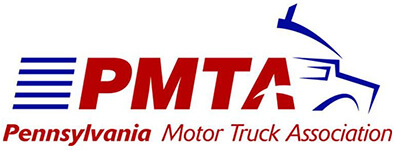
Open Roads Ahead: PA Turnpike’s Open Road Tolling Enhances Safety, Driver Convenience
By: Craig Shuey - Chief Operating Officer, The Pennsylvania Turnpike Commission
Commercial freight carriers are the nation’s lifeline, transporting food, equipment and goods that sustain critical services in nearly every sector. And since 1940, the Pennsylvania Turnpike has proudly connected the trucking community to local, national and global customers.
That legacy – extending nearly 85 years over a 565-plus-mile paved, predictable roadway linking Ohio, New Jersey and parts in between – doesn’t happen without innovation. In January, the Pennsylvania Turnpike again solidified its role as a national transportation leader when it transitioned to Open Road Tolling (ORT) the final phase of its All-Electronic Tolling implementation.
In an ORT system, customers drive at highway speeds without slowing down or stopping beneath overhead structures — called gantries — located between interchanges. Equipment on the gantry and in the roadway classifies and identifies vehicles while electronically processing tolls.
For our commercial trucking customers, ORT’s benefits include safer, unobstructed travel, standardized toll rates and enhanced reliability that gets drivers to destinations sooner.
Safer, smoother travel

Open Road Tolling is the culmination of the PA Turnpike’s decade-long journey to modernize operations and meet customer expectations.
ORT went live east of Reading and on the entire Northeast Extension on Jan. 5, 2025. By early 2027, it will expand to the PA Turnpike’s western region. Now that the eastern equipment is activated, tollbooth removal begins and is scheduled to last through the end of 2026.
This change is driven by safety and customer demand – more than 86% of our users have E-ZPass accounts and more than 235 toll facilities (roads, bridges and tunnels) across 27 states adopted all-electronic toll collection methods, according to the International Bridge, Tunnel and Tolling Association
ORT lifts tolling equipment above the roadway, improving sightlines. By removing tollbooths, customers could see reduced congestion, stop-and-go traffic and last-minute lane-switching by less experienced drivers.
Several mainline interchanges implemented ORT as part of pilot testing programs and saw significant crash rate reductions, including:
- A 76% reduction at Gateway (Lawrence County)
- A 71% reduction at Warrendale (Butler County)
- A 33% reduction at the Delaware River Bridge (Bucks County)
Seamless, nonstop travel also has environmental benefits including lower emissions, less fuel use and a cleaner environment.
With ORT, the PA Turnpike can build new connections at a fraction of the cost of traditional interchanges. These links ease traffic on local roads while increasing safety, mobility and economic opportunity in adjacent communities. New ORT interchanges are being designed in Montgomery, Lackawanna and Westmoreland counties.
Predictable rates, consistent classification
For commercial customers, ORT brings two significant changes: shedding weight-based vehicle classification and standardizing toll rates.
With the switch, the PA Turnpike moves from a weight-based vehicle classification system to one that is axle and height-based. As the last tolling system to use weight-based classification, the PA Turnpike now aligns with nationwide norms, immediately improving toll predictability, particularly for interstate drivers.

Standardized toll rates make it easier for large and small companies to anticipate and budget toll expenses. The PA Turnpike’s online Toll Calculator provides precise toll charges, factoring in vehicle class and distance traveled.
The E-ZPass base rate for a Weight Class 6/Height Class 5H truck is $0.28 per mile, plus a flat $4.36 fee per segment (distance between interchanges.) The 2025 toll calculations include a 5% toll increase to repay debt incurred from Act 44, a state mandate to provide supplemental transportation funding. Toll By Plate customers pay double the base rate, with additional vehicle classes charged a multiple of either E-ZPass or Toll By Plate base rates.
Due to these modernization-related changes, the 5% toll increase won’t be felt consistently among all trips. Here are two real-world scenarios, based on the most commonly occurring commercial (Weight Class 6/Height Class 5H) trips at E-ZPass rates:
- Mid-County to Lehigh Valley – an overall toll increase of approximately $5.
- Carlisle to New Stanton – an overall toll decrease of approximately $1.60
Overall, approximately 70% of commercial customers will see an increase of $5 or less. The greatest impact will be felt by trucks riding the system empty, with tolls charged at the rate of similarly sized, full vehicles.
Even with those changes, PA Turnpike commercial rates rank 33% below the national average.
When we opened in 1940, the PA Turnpike was the first of its kind, receiving nationwide acclaim as an engineering marvel. We set the national standard for superhighway design and engineering, and we’re proud to continue that legacy through ORT and our ongoing commitment to meeting commercial customers’ expectations for seamless, non-stop travel.
To learn more about the PA Turnpike’s commercial driving services, visit www.paturnpike.com/commercial.
About the Author
Craig Shuey is the PA Turnpike’s Chief Operating Officer and responsible for day-to-day operations, oversight, management, and strategic planning of the Pennsylvania Turnpike. In his role since 2011, he oversees several departments, including Toll Operations, Traffic Engineering and Operations, Maintenance and Human Resources. He joined the Commission in 2009 as its government affairs director.
Previously, he spent 15 years as staff in the Pennsylvania Senate and was executive director of its Transportation Committee. Shuey is a member of the International Bridge, Tunnel and Turnpike Association (IBTTA)’s Board of Directors and served two terms as chair of the E-ZPass Group’s Executive Management Committee.
Craig earned a political science degree from Bloomsburg University.
